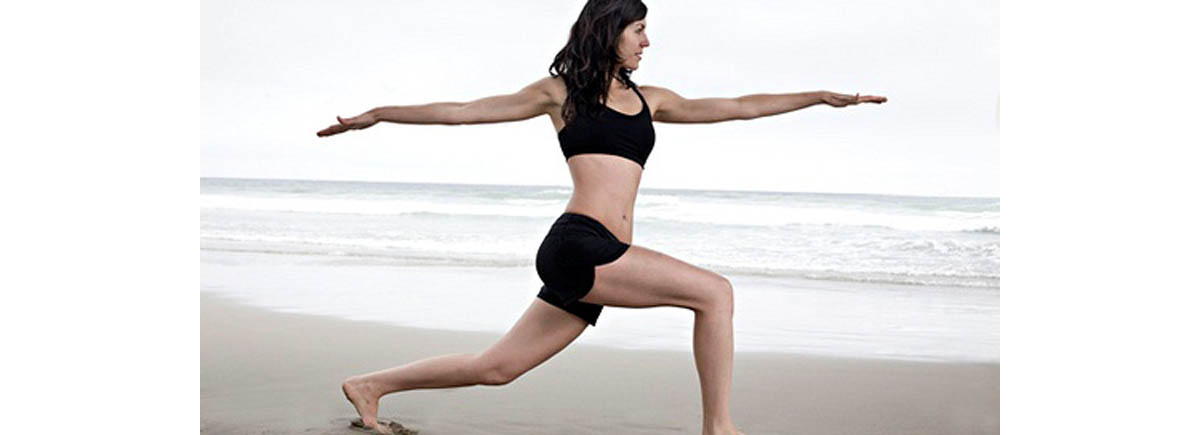Are you just one of many out there who suffer from back pain? When back pain gets in the way, you've got to take care of it as soon as possible! If you've suffered from chronic back pain, the end may be in sight for you as well. Studies on safe, simple, and effective methods of relieving back pain show that there is a way for those who live with back pain to be mobile again.

Why Your Back Hurts
Your back may hurt for any number of reasons. To be safe, first check with your physician that there are no torn muscles or damage vertebrae which could be the cause of your back pain. In these cases, other courses of action (mostly rest) should be taken.
Once cleared by your doctor, you can venture out into the world of active healing to find a solution to your back pain and get back to working out. Back pain is usually the result of a muscle or joint imbalance. An imbalance in your back or spine may also be the root cause of shoulder or knee pain. It's not easy to figure out the cause of the problem without the help of a physical therapist. However, even knowing what the problem is may not help you solve the problem. The most common causes of back pain are discussed below.
1. Weak back support
Weak back support means that either the muscles of the back or the abdominal muscles are weak, meaning that they are not doing their job properly. The muscles of the core are designed to hold the trunk upright, and if one group is weak, you'll start to feel it. In this case, strengthening your muscles can offer you relief.
2. Bilateral imbalances
Bilateral imbalances means a difference in the strength or flexibility between the right and left sides. Either of these may cause problems such as soreness, tightness, or just an uncomfortable feeling in your back. You may also have pain in your hips or knees on one side as a result of the imbalance carrying through to other joints which rely on the symmetry of the spine to function normally.
3. Carrying too heavy of a load
Carrying too heavy a load means you're carrying too much weight — you are overweight or obese. Usually men with extra weight accumulated around the waist will hurt their back. In women, its usually large, heavy breasts which cause back pain. The weaker the back muscles the more stress is placed on them, as it pulls the trunk forward. Losing weight should be your primary concern if you fit into this category. Heavy breasts are not necessarily reduced through exercise and losing weight, so in that case, the focus can be on strengthening the back muscles and finding an excellent bra for support.
How To Actively Repair Your Back Pain
Want your back pain to go away? There are active ways of relieving back pain which have been studied on large and small scales. The worst thing you can do for back pain is let it take control. Don't stop working out altogether, and avoid using medications if not absolutely necessary.
Yoga for Back Pain

Pilates for Back Pain
Pilates is also a good way of actively working on back pain. Pilates really focuses on improving posture and core strength. By doing pilates, you'll be improving your whole body strength, but doing so in a safe, low impact way. The risk of hurting your back further is slim to none. Pilates was designed as a rehabilitation for those wounded in battle, and has since been modified to fit everyday people wanting to get in shape, improve strength, flexibility and mobility.
These methods are great at relieving back pain because they are safe, slow exercises which stretch and strengthen at the same time and which have a very low risk of making your back pain any worse. The possible problem muscles and joints in the back are stretched and strengthened evenly, balancing out typical imbalances.
In addition to working out the imbalances, you'll still be exercising, so you can maintain whatever good conditioning you've worked towards.
How to be Sure it Doesn't Happen Again: Staying on Top of Your Exercise Regime
Maintain your healed back by continuing on with regular stretching exercises, if possible every day. You can also continue periodic yoga and pilates classes to be sure you don't slip up again, which additionally improves your overall fitness and mobility. Its also a good idea to include stability exercises in your regular workout. Use the stability ball, bosu ball (half ball) for a couple of exercises.
You can also continue to work out your abs. The abdominal muscle is tough and can be trained every time you workout. Add one to three ab exercises of the following: overhead sit ups, the plank, V -ups, hollow body rock, or leg raises.
What your New Workout should look like
Your program as a whole can look the same as it ever did, but be sure that you do weights, do some form of squats 2 to 3 times per week, and combine both weights and cardio. You'll have to have a well-rounded program which uses all major muscle groups equally. The deep, smaller muscles you'll use for stability and posture should also be strengthened in the core portion of your workout. This is the time to perform abdominal exercises, or some pilates or yoga.
Be sure to do a general warm up which is relevant to the exercises you'll be doing that day. Always stretch at the end of your workout, too, as that will help you cool off from the exercise and make your recovery much smoother.
- Karen J. Sherman. Daniel C. Cherkin. Robert D. Wellman. Andrea J. Cook. Rene J. Hawkes. Kristin Delaney. Richard A. Deyo. A Randomized Trial Comparing Yoga, Stretching, and a Self-care Book for Chronic Low Back Pain. Archives of Internal Medicine, 2011
- Photo courtesy of lululemonathletica on Flickr: www.flickr.com/photos/lululemonathletica/3681654917
- Photo courtesy of stevendepolo on Flickr: www.flickr.com/photos/stevendepolo/3279915918

